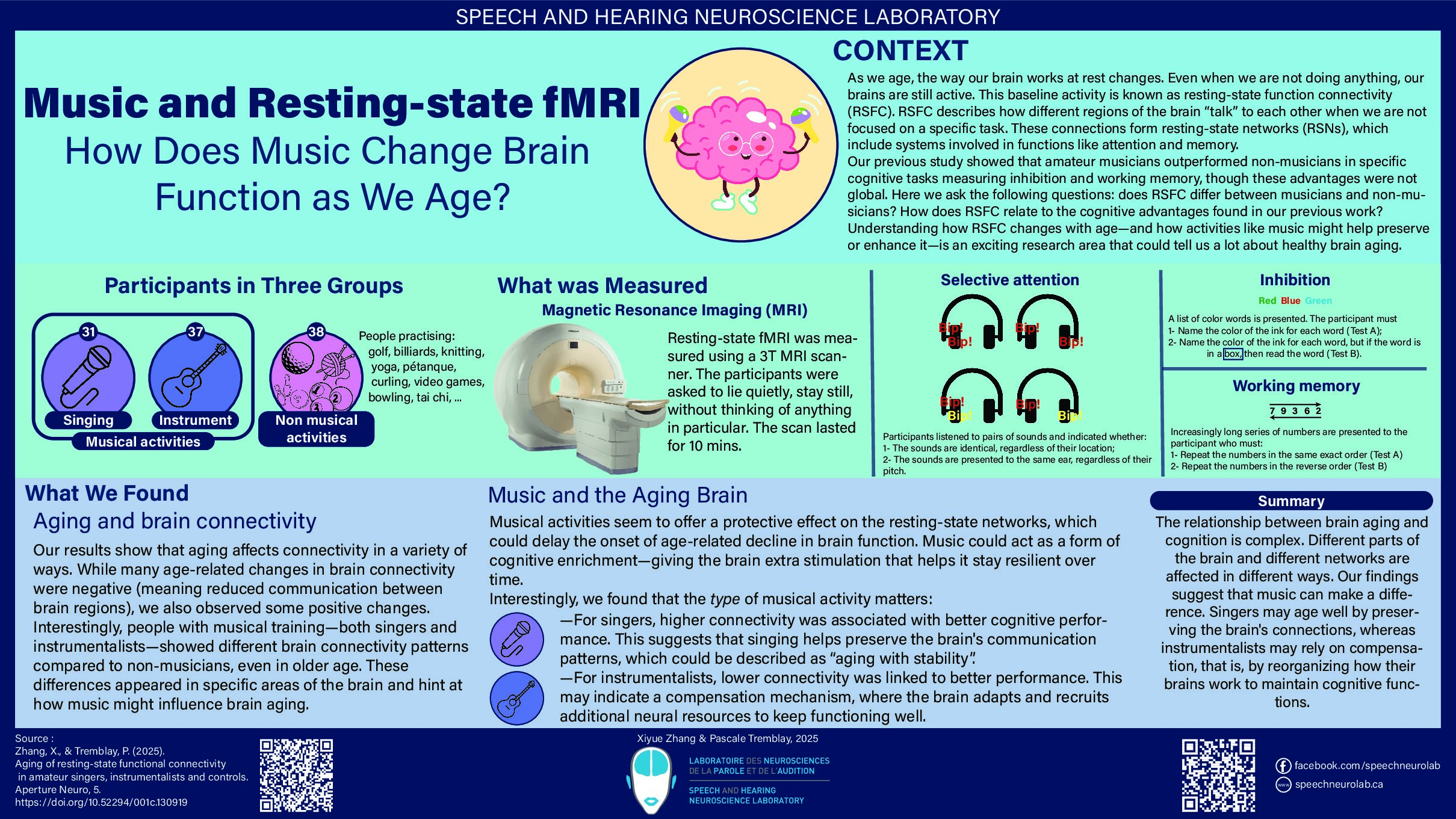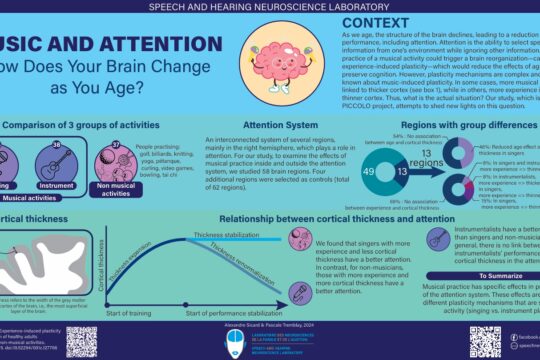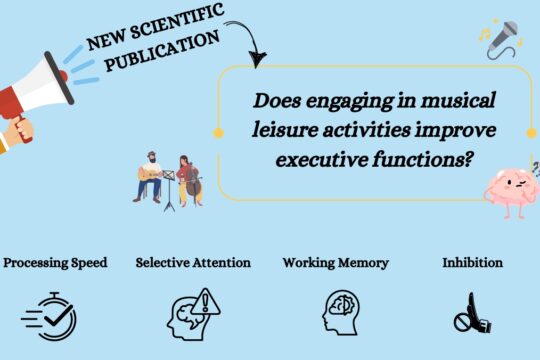People who participate in our research projects must perform various tests that may seem unusual to them, sometimes even a little odd, such as repeating invented words or deciding whether two syllables are the same or different. Why such tests? And how are they created?
Today, we answer these questions using a concrete example from the lab and by making a parallel with baking! Yes yes, pastry! Besides, don’t people say that baking is a science?!
Here are several steps to follow when creating an experimental test, that is to say, a test that aims to answer a research question and test hypotheses using an experiment. In order to illustrate these steps in a concrete way, we will explain each step with a fictional example related to baking (A) and a real example from our lab (B) featuring two students, Marjorie and Sophia, who are preparing a transcranial magnetic stimulation (TMS) study.
Step 1. Based on the scientific literature and relevant theories and models, identify a research question.
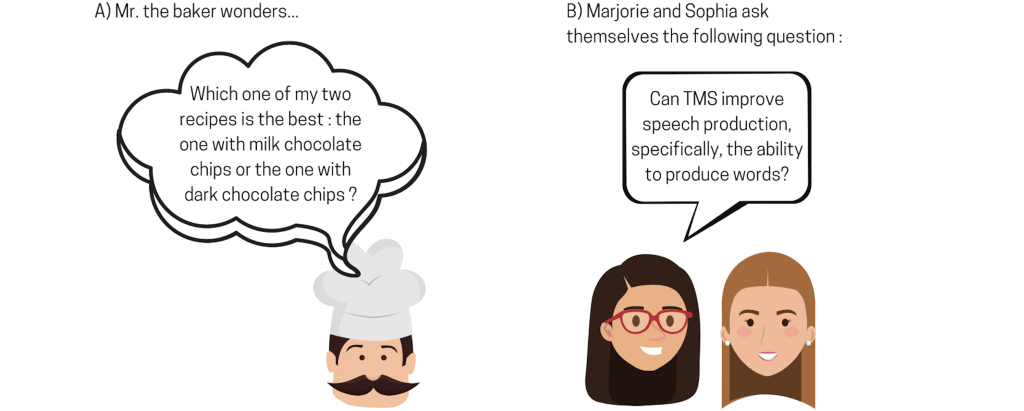
Step 2. Choose a type of test and a type of stimuli (e.g., syllables, words invented or not, sentences) that can answer our research question.
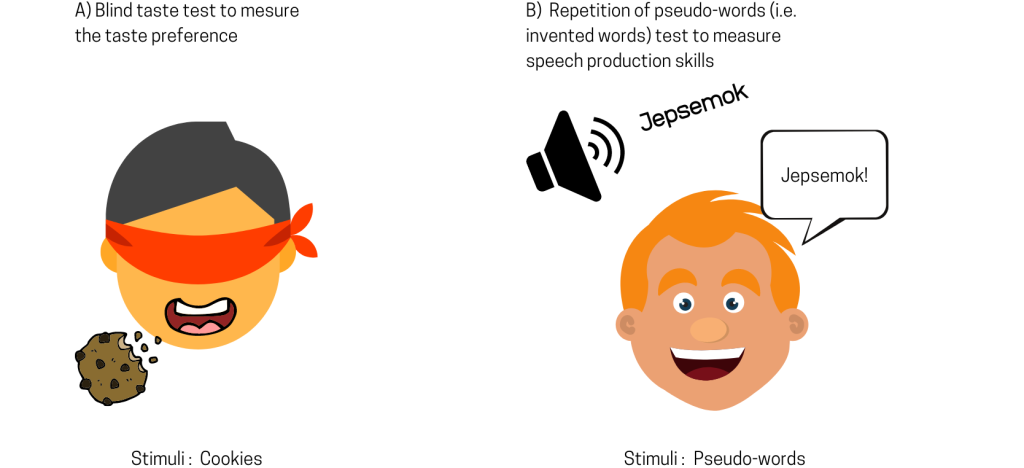
Step 3. Identify the independent variable, the variable that will be manipulated in the experiment.

Step 4. Identify the dependent variables, the ones that will be measured during the experiment.

Step 5. Identify the confounding variables that need to be controlled in the experiment.
This step is crucial to be able to answer our research question. In fact, if there are several variables that fluctuate during the test, it will be difficult to identify which of these variables is responsible for the observed results.
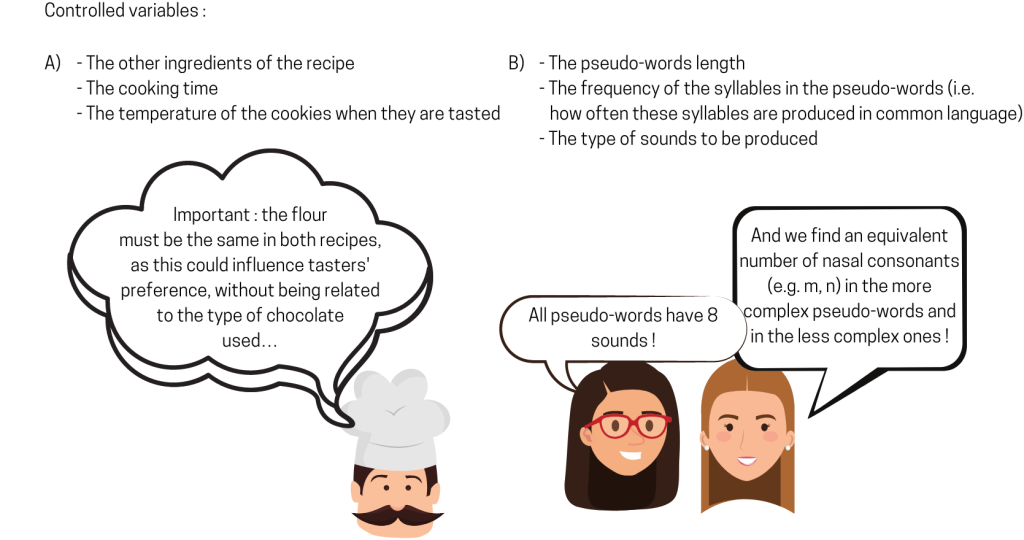
Step 6. Prepare the test.
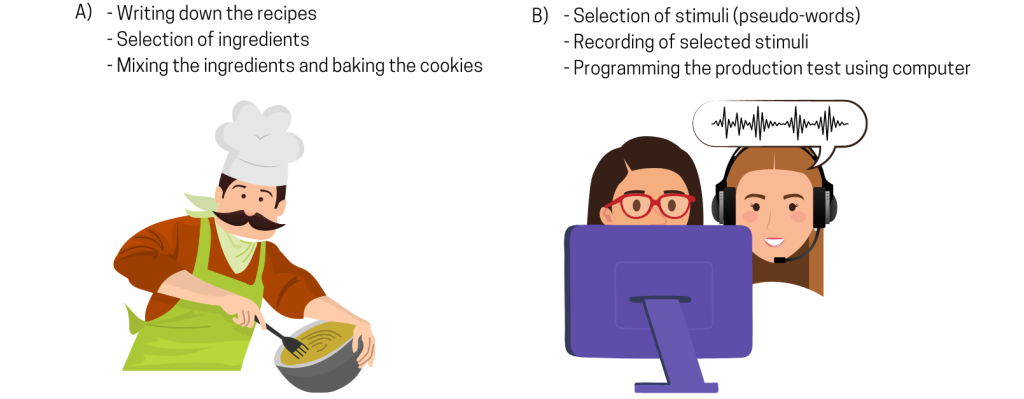
Step 7. Pilot the experiment, that is to say, test the procedures with a few volunteers to make sure that the computer program and all the instruments work correctly, to verify the degree of difficulty of the test and how people respond to it (how many errors they produce, how stressful the test feels).
If the pilot tests are not satisfactory, modifications must be made and further tests must be run before the experiment can be launched! This process can be repeated several times. Experimental work is iterative and requires patience and meticulousness!
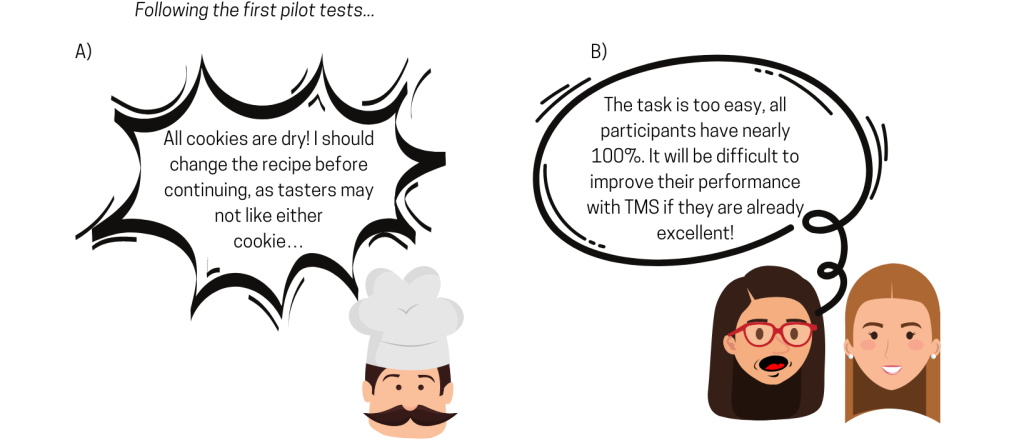
Generally, the process of creating an experimental test takes several months. No details are left to chance, which is key to providing a valid answer to a research question! A variety of tests have been developed in our lab, evaluating not only speech production skills, but also speech perception, voice production, and language!
In the case of Marjorie and Sophia, they are currently at preparing their experimental test. Their stimuli are recorded, but they still have several steps to perform before starting the first pilot tests such as check the quality of the audio recordings, normalize sound intensity such that all stimuli are identical, recruit volunteers and schedule pilot test, etc. We wish them all the best during these last preparations!

